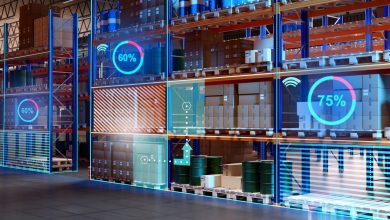Over the course of my close to two decades of experience in system development and design, I have seen artificial intelligence (AI) change from an enigmatic “black box” to a critical part of mission-critical systems. From developing cross-border trade systems within Central Asia to overseeing an AI-driven EdTech platform that serviced more than 50,000 students, I’ve learned to value the need to build systems around safety, interpretability, and resilience. The more widespread the AI technologies become in healthcare, finance, and autonomous systems, the higher the stakes in ensuring that each design of an AI system is error-free.
The Evolution from Black Box to Transparent Systems
Back in the early days of AI, the “black box” phenomenon of ML models was tolerated only reluctantly. All decisions in such systems were opaque, and in the vast majority of applications, interpretability was a secondary concern. But as AI systems began to become used in more serious applications, such limitations of opacity were revealed. Traditional systems, as complex as they were, such as the 100TB data warehouse I re-architected with ClickHouse at Kameleoon, were necessarily more transparent. All those conversions were traced, input to output. Traceability to such a degree is increasingly an issue for AI systems, especially if used in high-stakes contexts.
AI, especially machine learning, functions by learning patterns from information. While the predictions are accurate, the basis for the same is not evident all the time. Not having such a component is an issue, particularly when AI systems make decisions that significantly affect human life. This change of heart, from the way we used to approach AI as a black box and now approach it as a system which has to be transparent, explainable, and accountable, is a fundamental change in the way we approach designing these systems. Principles of AI safety are the motivations for the design of the systems today, with the focus being on needing to construct systems that are auditable, controllable, and explainable from the outset.
Architectural Principles for Safe AI Systems
As an engineering manager with experience leading teams across multiple domains, including fintech, e-commerce, and AI safety, I’ve learned that effective system architecture requires clear guiding principles. These principles are even more critical when designing AI systems that must be safe and reliable.
The first of these principles is layered interpretability. In a similar fashion, we build the traditional software with separation of concerns, and in a similar fashion, the AI systems must be built so that interpretability is an integral part at every stage of the decision-making. It doesn’t mean that only decisions are understood, but also why decisions are taken. For example, when I was developing the Profilum recommendation system, we had systems for logging not just what recommendations the system was showing, but why something was suggested over something else. It was required for reasons of transparency both in terms of user trust and to be able to answer questions and tweak the system via A/B testing.
Another key principle is being robust by design. In traditional software programs, we more or less employ exception handling and error recovery to the management of edge cases. In applications of artificial intelligence, however, we need to proactively take on and design failure mode defenses in advance, especially because learning machines are dynamic. Developing fintech platforms at large scale, I felt that resilience meant anticipating failure points and system design as much as stabilizing them with calm. For AI systems, this means proactive measures such as adversarial testing, input validation, and graceful degradation policies when confidence levels drop below acceptable levels.
The third inherent principle is ongoing monitoring and feedback cycles. In contrast to classical systems, wherein bugs are typically deterministic and repeatable, AI systems will change behavior in unforeseen manners over time. Subtle prejudices can creep into systems, or performance can quietly degrade without warning. Through experience with managing financial systems processing millions of transactions, I have learned the value of real-time visibility. The same goes for AI systems, in which monitoring in real-time for degradation in performance, bias, and alert when encountering anomalies are necessary to make the system reliable and user expectation to standard.
Practical Implementation Strategies
Successfully implementing these AI safety principles requires practical strategies that can be applied within the context of system architecture. Drawing from my experience with various large-scale projects, I’ve identified several key strategies for integrating safety into AI system design.
One of the most important is the use of modular AI pipelines. Rather than monolithic design, we can break the AI system down into composable, manageable pieces that focus on specific aspects of the decision-making process. That aligns with good microservices architecture patterns I’ve used in fintech and e-commerce platforms. Not only is it more maintainable, but it allows us more precise control over the safety mechanisms of the system. Each item can be independently tested, validated, and updated, which makes it easier to locate and fix issues when discovered.
Another approach is to employ human-in-the-loop architectures. While AI systems might make decisions at scale, there are going to be some cases always requiring the intervention of humans. Not step-by-step intervention, but it definitely means building systems where human experts can audit and override decisions when needed. For example, in work with a HoReCa marketplace with over 150 client businesses, one experience I learned was that computer systems function best when they are designed to augment human decision-making and not to automate it entirely. For AI, this means constructing user interfaces that allow domain experts to intervene where there is high impact so as to maintain the decision-making of the AI aligned with human ethics and situations.
One more useful tactic is having staged rollout and rollback processes. If you deploy AI systems to production, there have to be processes to roll back just back to previous versions in case it fails. I helped at Kameleoon to enhance the CI/CD pipelines with little build time and instant deployment and rollback. The same principles can extend to AI systems, leverage canary deployments, A/B testing systems, and the ability to roll back to earlier versions of a model in a timely way can protect users from potentially disastrous fallout.
Challenges and Trade-offs
Implementing AI safety principles is valuable, but there is a price to pay. The biggest cost, perhaps, is the attainment of performance and interpretability in balance. More interpretable models, such as decision trees or linear models, sacrifice some of their predictiveness to more black-boxed models such as deep neural networks. This sacrifice can be specifically difficult to strike when high predictiveness is paramount in the scenario. Additionally, the safety functions we insert into AI systems insert computational overhead, hindering system execution.
Another obstacle is the difficulty in scaling AI safety deployment. AI systems require new skills and processes, and integrating these safety principles often requires restructuring teams and workflows. From my experience overseeing teams across diverse departments and geographical locations, I’ve learned that the successful adoption of new technologies depends as much on the organizational capacity for change as it does on the technology itself. This is achieved by investing in education, developing new skills, and giving the teams the support they require to cope with these new complexities.
Resource budgeting becomes even more complicated when safety is an issue. As an investment in the safety of AI typically has an upfront expense, time and money. But based on what I’ve seen doing project budgeting and tracking actual employee costs, I believe the long-term dividend of creating systems that can be trusted and depended upon well surpasses these initial expenditures.
The Future of AI Architecture
Looking forward, I believe we’re at the edge of a future where AI safety principles will be as ingrained in system design as security and scalability are today. The years of dealing with experience, if they were tuning transaction systems or constructing solid AI-enabled offerings, have all pointed to one location: only safe and innovative systems will survive.
In the coming years, AI safety will no longer be a specialized or add-on product but the normal expectation of all companies building AI systems. With more uses of AI in society, transparent, interpretable, and resilient systems will become ever more essential. The move from the black box to an open, controlled one isn’t necessarily due to improved technology; it’s ensuring these systems can be relied on to increase human capability without adding unforeseen risks.
By building in safety principles for AI into the design foundation of our systems now, we’re not only ensuring those systems work well, we’re ensuring they work well in a way that’s understandable, explainable, and aligned to human values. That’s what it takes to build the future of AI when safety and performance support one another.
Finally, the AI systems which we design today will determine what sort of technologies will characterize our future. It is our responsibility that these systems have to be designed in the most extreme care and foresight, balancing innovation and safety at all points. The future belongs to AI systems which are not only efficient, but also understandable, controllable, and above all, safe.
About the author
This article is written by Dmytro Saiankin, an engineering manager and software architect with over a decade of experience in the tech industry, specializing in AI safety, e-commerce, and fintech. His extensive background in system design and team leadership, particularly in AI-driven projects, has positioned him as an expert in AI safety. Dmytro’s work includes leading the development of AI-driven recommendation systems, showcasing his deep understanding of both AI technology and its safety implications. His hands-on experience and technical leadership make him a credible voice in reshaping system architecture through the principles of AI safety, as explored in this article.



